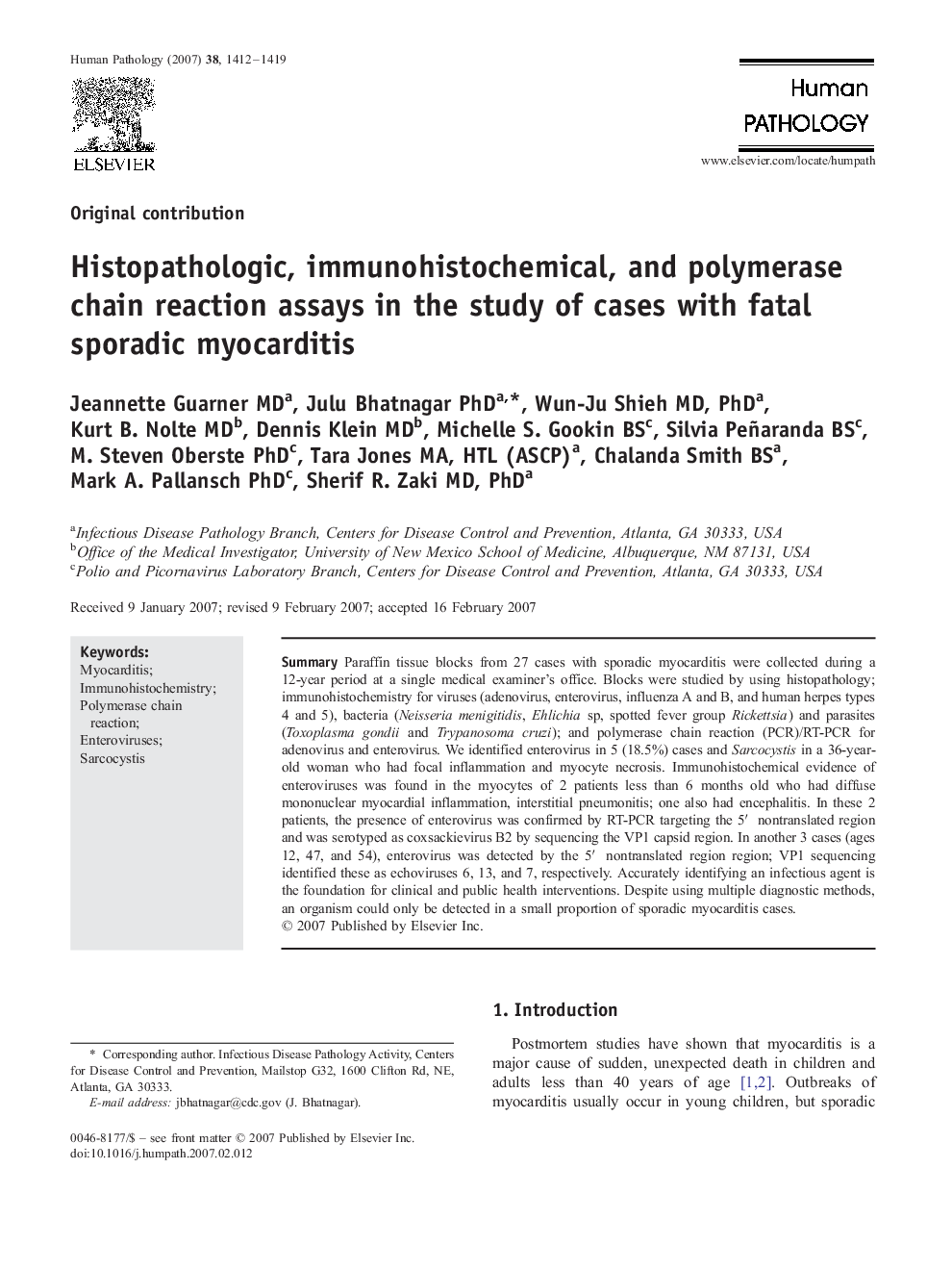| Article ID | Journal | Published Year | Pages | File Type |
|---|---|---|---|---|
| 4135000 | Human Pathology | 2007 | 8 Pages |
SummaryParaffin tissue blocks from 27 cases with sporadic myocarditis were collected during a 12-year period at a single medical examiner's office. Blocks were studied by using histopathology; immunohistochemistry for viruses (adenovirus, enterovirus, influenza A and B, and human herpes types 4 and 5), bacteria (Neisseria menigitidis, Ehlichia sp, spotted fever group Rickettsia) and parasites (Toxoplasma gondii and Trypanosoma cruzi); and polymerase chain reaction (PCR)/RT-PCR for adenovirus and enterovirus. We identified enterovirus in 5 (18.5%) cases and Sarcocystis in a 36-year-old woman who had focal inflammation and myocyte necrosis. Immunohistochemical evidence of enteroviruses was found in the myocytes of 2 patients less than 6 months old who had diffuse mononuclear myocardial inflammation, interstitial pneumonitis; one also had encephalitis. In these 2 patients, the presence of enterovirus was confirmed by RT-PCR targeting the 5′ nontranslated region and was serotyped as coxsackievirus B2 by sequencing the VP1 capsid region. In another 3 cases (ages 12, 47, and 54), enterovirus was detected by the 5′ nontranslated region region; VP1 sequencing identified these as echoviruses 6, 13, and 7, respectively. Accurately identifying an infectious agent is the foundation for clinical and public health interventions. Despite using multiple diagnostic methods, an organism could only be detected in a small proportion of sporadic myocarditis cases.
